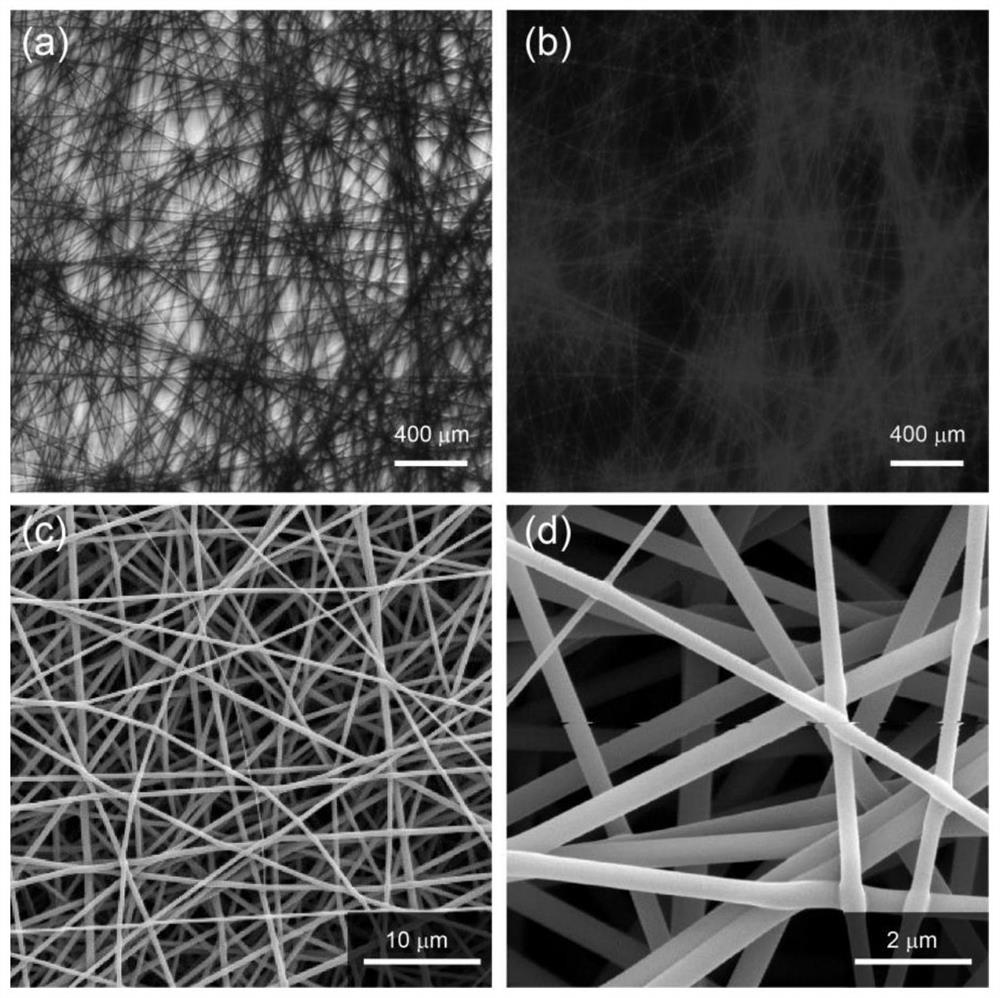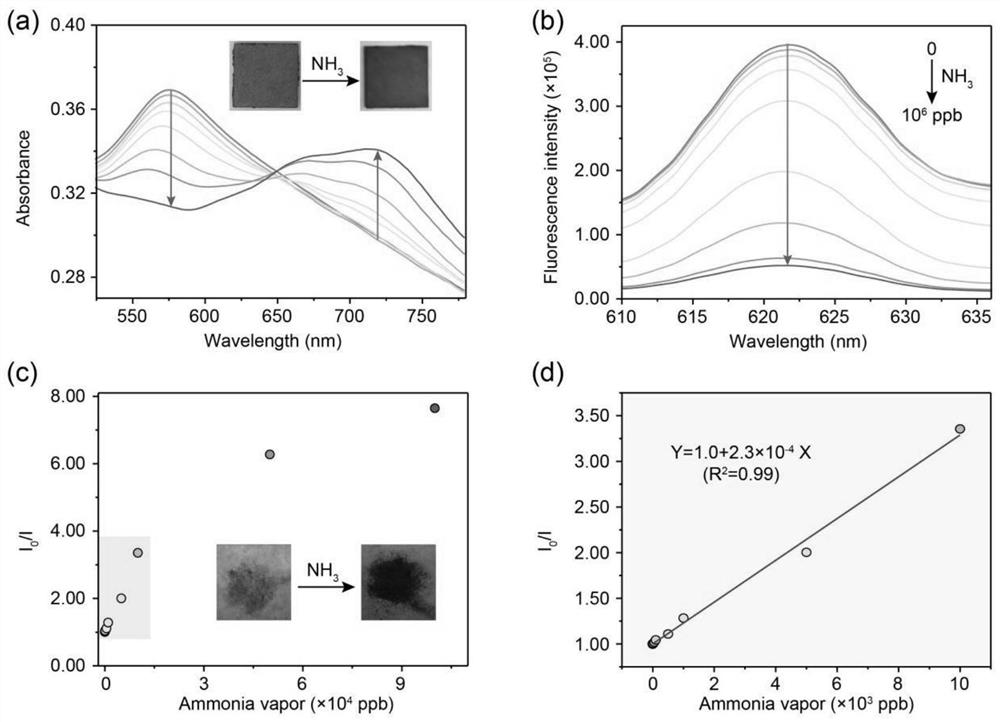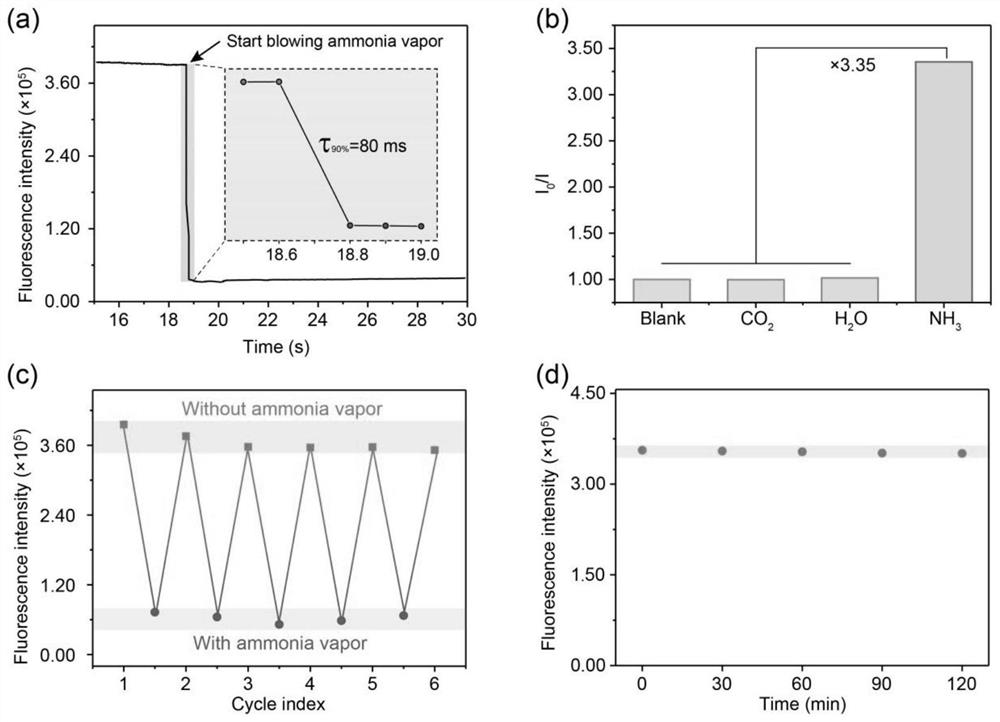Fluorescent sensor for detecting respiratory ammonia as well as preparation method and application of fluorescent sensor
A technology of fluorescent sensor and fluorescent dye, which is applied in the field of fluorescent sensor for detecting respiratory ammonia and its preparation, can solve the problems that hinder the high sensitivity and reliability of biology, the complicated pretreatment process of gas collection, and the difficulty of generating solid-state fluorescence, etc., and achieve good light Effects of stability and recyclability, low detection limits, and fast response times
- Summary
- Abstract
- Description
- Claims
- Application Information
AI Technical Summary
Problems solved by technology
Method used
Image
Examples
Embodiment 1
[0037]In a preferred embodiment, the fluorescent sensor for detecting breath ammonia of the present invention is composed of a fluorescent dye and a matrix for dispersing the fluorescent dye. Wherein, the fluorescent dye is a boron trifluoride derivative (BFCUR) of curcumin; the substrate is an electrospun nanofiber (ENF) of polyvinylpyrrolidone (PVP); BFCUR and ENF are compounded to form the present embodiment for detecting breathing Fluorescence sensor for ammonia BFCUR-ENF.
[0038] The preparation method of the fluorescent sensor BFCUR-ENF for detecting breath ammonia in this embodiment is as follows:
[0039] Step 1: Synthesis of BFCUR: Dissolve curcumin (1.0mmol, 0.37g) in 30mL of dichloromethane, stir vigorously at room temperature for 10min, then add 1mL of boron trifluoride ether; stir and react at room temperature and nitrogen atmosphere for 8h, It was monitored by thin-layer chromatography; after the curcumin reacted completely, the solvent was removed under reduce...
PUM
| Property | Measurement | Unit |
|---|---|---|
| diameter | aaaaa | aaaaa |
Abstract
Description
Claims
Application Information
 Login to View More
Login to View More - Generate Ideas
- Intellectual Property
- Life Sciences
- Materials
- Tech Scout
- Unparalleled Data Quality
- Higher Quality Content
- 60% Fewer Hallucinations
Browse by: Latest US Patents, China's latest patents, Technical Efficacy Thesaurus, Application Domain, Technology Topic, Popular Technical Reports.
© 2025 PatSnap. All rights reserved.Legal|Privacy policy|Modern Slavery Act Transparency Statement|Sitemap|About US| Contact US: help@patsnap.com



